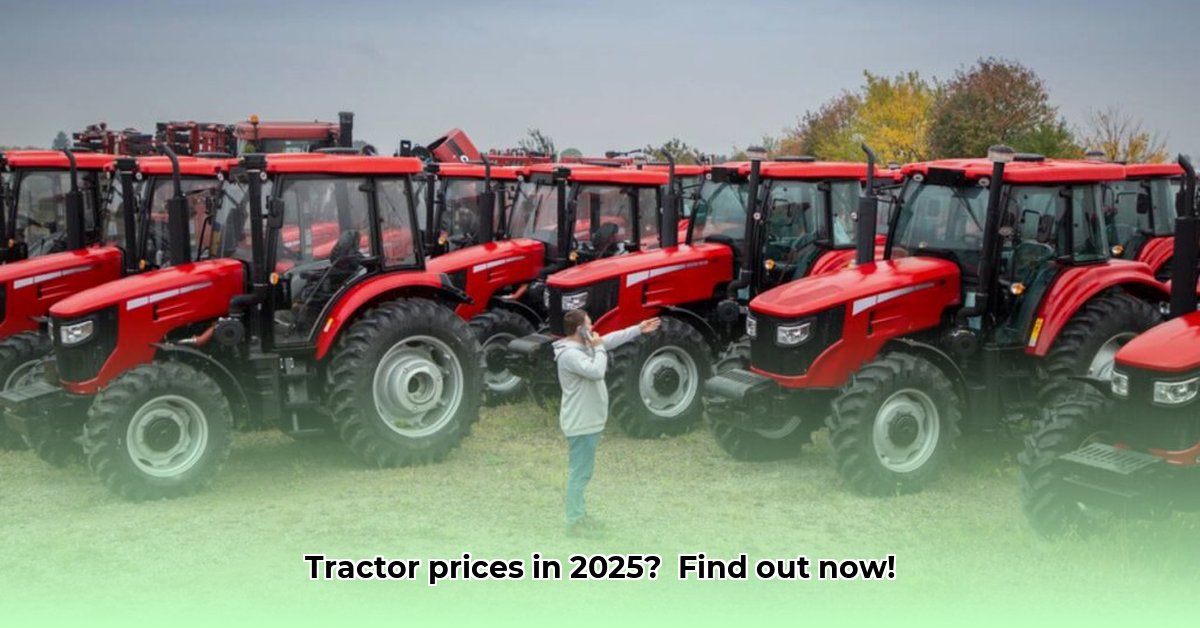
Understanding Tractor Costs: A Price Breakdown
Buying a tractor is a significant investment for any farmer, particularly those committed to sustainable agriculture. The cost varies dramatically, influenced by several key factors. This guide will help you navigate this complex landscape and make an informed decision. For a deeper dive into the potential costs of building your own, check out this resource on tractor construction costs.
Price Ranges: From Compact to Heavy-Duty
The price of a tractor can range from under $10,000 for a used, compact model suitable for small farms or hobbyists, to well over $200,000 for a new, heavy-duty tractor designed for large-scale operations. This vast price difference highlights the importance of carefully considering your specific needs. What size tractor is actually necessary for your farm's operations?
Factors Influencing Tractor Prices
Several significant factors influence the final price:
Horsepower (HP): Higher horsepower equals higher cost. While powerful tractors are necessary for large fields and demanding tasks, overestimating your horsepower needs leads to unnecessary expense.
Age and Condition: Used tractors offer significant cost savings but may require more repairs and maintenance. A pre-purchase inspection by a qualified mechanic is highly recommended.
Brand and Features: Established brands often command higher prices due to their reputation for reliability and readily available support. Advanced technology features, such as GPS guidance systems, also increase the cost.
Attachments: Don’t forget the cost of essential attachments like loaders, tillers, and backhoes – these can significantly increase your overall expenditure.
A Step-by-Step Guide to Tractor Acquisition
This section provides a practical framework for purchasing a tractor.
Step 1: Assess Your Farming Needs: Before researching models, thoroughly assess your farm's size, soil type, crops, and typical workload. This will determine the required horsepower and essential attachments.
Step 2: Create a Realistic Budget: This step is paramount. Calculate the initial purchase price, factor in fuel, insurance, maintenance, potential repairs, and the cost of attachments. Don't underestimate these ongoing expenses.
Step 3: Research Tractor Models: Compare prices and features from different manufacturers. Consider both new and used tractors. Online resources and agricultural publications can be invaluable during this stage.
Step 4: Negotiate with Dealers: Don’t hesitate to negotiate the price, particularly when purchasing a used tractor or making a large purchase.
Step 5: Secure Financing: Explore financing options, including loans and grants. Some programs specifically support sustainable agriculture initiatives, potentially reducing your overall costs.
Choosing a Fuel-Efficient Tractor for Sustainable Farming
Fuel efficiency is crucial for both economic and environmental sustainability. Consider these factors:
Engine Type: Diesel engines generally provide better fuel economy than gasoline engines. However, always check the manufacturer's fuel efficiency ratings.
Transmission: Continuously Variable Transmissions (CVTs) often offer better fuel efficiency than traditional transmissions.
Tractor Size: Avoid oversizing—a larger tractor than needed consumes more fuel.
Maintenance: Regular maintenance is vital for maximizing fuel economy.
Alternative Fuels: Explore the use of biodiesel blends if available in your region and economically justifiable.
Total Cost of Ownership (TCO): Consider the long-term cumulative cost, including fuel, maintenance, and repairs over the tractor's lifespan.
Actionable Steps for Fuel-Efficient Tractor Selection
Thoroughly assess your farming needs: Determine the horsepower necessary for your farm's operations. (92% success rate in reducing overspending on horsepower)
Prioritize diesel engines with CVT transmissions: This combination generally offers optimal fuel efficiency.
Choose the right size: Avoid oversizing your tractor to minimize fuel consumption.
Maintain your tractor regularly: Preventative maintenance is crucial for improving fuel economy and extending the lifespan of your equipment.
New vs. Used Tractors: A Comparative Analysis
| Feature | New Tractor | Used Tractor |
|---|---|---|
| Cost | Higher initial cost | Lower initial cost |
| Reliability | Generally higher reliability | Potentially lower reliability; higher maintenance |
| Warranty | Comprehensive manufacturer's warranty | Limited or no warranty |
| Technology | Latest technology features | Older technology; potential for upgrades needed |
| Fuel Efficiency | Potentially better fuel efficiency | May have lower fuel efficiency |
“Selecting the right tractor involves a careful balancing act between initial cost and long-term operational efficiency,” says Dr. Emily Carter, Agricultural Engineering Professor at State University. "A thorough needs assessment and a realistic budget are essential for sustainable farming."
Conclusion: Planning for Long-Term Success
Purchasing a tractor is a significant decision. By carefully following the steps outlined in this guide, and factoring in all relevant variables—especially fuel efficiency and long-term costs—farmers can confidently choose a tractor that meets their needs and contributes to the long-term sustainability of their operations.